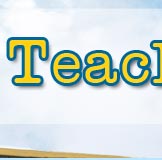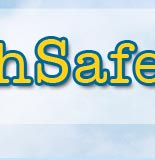VOCABULARY DEVELOPMENT
 Download and Print Vocabulary Development Booklet here (PDF) Download and Print Vocabulary Development Booklet here (PDF)
GUIDELINES FOR TEACHING PHONEMIC AWARENESS
- Start with continuous sounds such as /S/, /M/, and /F/ that are easier to pronounce then use stop sounds such as /P/, /B/ and /K/.
- Carefully model each activity as it is first introduced.
- Move from larger units (words, onset-same) to smaller units (individual phonemics). (recognize and generate sounds, use activities.)
- Move from easier tasks (e.g., rhyming) to more complex tasks (e.g., blending and segmenting).
- With struggling early readers use additional concrete objects (blocks, bingo chips) to represent sounds.
- Ensure that students understand the concepts “same, different, beginning, middle and end.”
- Lovett et al., (2000) have used an analogy to teach rhyming. They use a picture of a door called the Rhyming Door and a picture of a Key with the rhyming word on it (e.g., “and”). Then they use a second Picture Door that includes possible rhyming words (band, hand, sand). The teacher thinks aloud and models how to use the “rhyming plan or strategy.”
- Use a variety of sensory-motor activities including singing the alphabet song, clapping out sounds in words, choral responding and creating word families with magnetic letters, word walls, games (hints). For example, “The word begins with H and rhymes with sand. What is the word?” Remember recognizing rhymes is easier than generating them. Do recognition tasks first.
- For older children see Lovett et al.’s strategies for decoding (using a peeling off strategy of prefixes and suffixes); vowel alert strategy; word identification “I spy” strategies; game plan strategy; make sense strategy.
- Inform parents of what sounds the class is working on and possible activities they could engage in to support classroom instruction.
|
GUIDELINES FOR INSTRUCTION IN LETTER-SOUND KNOWLEDGE AND WORD RECOGNITION
(See Chard & Osborn, 1999; Jolly Phonics for sensory-motor activities to learn letters)
- Begin with the letters n, s, a, and t.
- Separate the teaching of the letters b and d, n and m, and p and q since they can be confusing.
- Teach at least two letter-sounds per week. Once they learned three or four letter-sound associations, it is important to practice building words.
- Practice fast pronunciation of words. It has been estimated that on average a beginning reader needs 35 repetitions in the identification of a new word before it becomes instantly recognizable. (Range from 20 to 55 repetitions. By grade 3 it is halved.)
- Practice sounding out words, followed by blending sounds and fast pronunciation of the whole word.
- Encourage students to explore a variety of books and to look for and identify letters and words they know.
- Use re-reading of well-structured predictable books with a controlled vocabulary at carefully selected levels of difficulty.
- Monitor students' progress.
EXAMPLES OF PROCEDURES TO FOSTER WORD IDENTIFICATION SKILLS (See Bryant et al., 1999)
1. Practice making words. Combine individual letters 2 - 3 - 4 - 5 letter words.
2. Have a “word for the day”.
3. Practice making shorter words form letters of “big” words.
4. Have students practice changing letters around to make other words.
5. Learn words in context of a story.
KEY ADDRESSES
 |
American Federation of Teachers
555 New Jersey Ave., NW
Washington, DC 20001-2079 |
 |
AMERICAN LIBRARY ASSOCIATION
50 E. Huron
Chicago, IL 60611
1-800-545-2433
www.ala.org |
| |
|
|
|
 |
International Reading Association
800 Barksdale Road
P.O. Box 8139
Newark, Delaware
19714-8139
www.reading.org |
 |
Jolly Phonics
Jolly Learning Ltd.
2 Winter Sport Lane
Williston, VT 05495-0029
1-800-488-2665 |
| |
|
|
|
 |
Starfall Publications
PO Box 359 Boulder,
Colorado 80306
1-888-857-8990
learn@starfall.com |
|
|
|
|
 |







